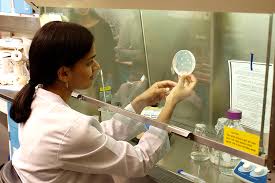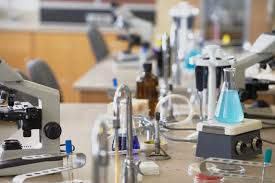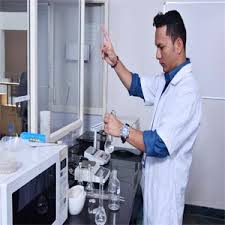Unit title & code :- BHS002-1 Microbiology and Biochemistry
Assignment number and title :- Assessment 2 Referral Practical Portfolio (Biochemistry)
Assignment type :- WR-Lab
Weighting of assignment :- 25%
Size or length of assessment :- 2000 words
Unit learning outcomes
1.Present, analyse and interpret experimental data and clearly communicate your findings in writing.
2.Demonstrate understanding of the molecular and cellular mechanisms involved in metabolic pathways through the relationship between biochemical and biotechnological systems
BHS002-1 Microbiology & Biochemistry Assignment – Bedfordshire University UK.

What am I required to do in this assignment?
You will carry out two practicals
1. In the first session you will carry out the Trinder’s assay of Glucose. This will require calibration using a standard absorbance curve; identification of an unknown glucose concentration will follow.
2. In the second session you will use thin layer chromatography to analyse the behaviour of lipid samples.
Following the practical sessions you will be expected to produce a portfolio comprising two laboratory reports detailing your findings across both sessions. Each report will be self-contained, but they should be submitted as a single document of no more than 2000 words. Excessive word counts will negatively affect grading. The lab report should be structured like a research article in a scientific journal (see details below), and should be submitted via Breo.
BHS002-1 Microbiology & Biochemistry Assignment-Bedfordshire University UK.

What do I need to do to pass? (Threshold Expectations from UIF)
- In order to pass Assessment 2 you will need to:
- Produce a scientific report according to expectations described in the assignment brief to demonstrating understanding of relevant laboratory techniques.
- Demonstrate understanding of Biochemistry, (biomolecular structure and function and basic metabolism) and microbiology (structure, function and role) with an emphasis on the relevance of these concepts to human health
How do I produce high quality work that merits a good grade?
Each lab report should contain four sections: Introduction, Results, Discussion and References. Each section should be clearly labelled. Clarity of English language and presentation is essential throughout. The report should be presented using 12 point Perpetua, with 1.5 line spacing.
Introduction: This section should typically represent approximately 30% of each report. It should summarise the published background literature relevant to this study. It must explain what your experimental study is about, and place it in context of the previously published literature. It should state the scientific aim of the study.
BHS002-1 Microbiology & Biochemistry Assignment-Bedfordshire University UK.

Results and discussion:This section should typically represent the remaining 60-70% of each report. Data may be presented in tables, graphs, diagrams, or photographs as appropriate for your particular experimental study. Figures and tables should be separately numbered, and be clearly labelled. You should include written text to explain what your findings are and what is shown in the figures and tables. Results should describe your findings/observations, but not interpret their meaning. In the discussion you should interpret your results, explaining what they indicate. You should evaluate the quality of your data. You should identify any problems with the technique or data (if any exist) and suggest possible solutions. You should compare your findings to previously published findings or your expected findings, and should place your results in the context of published scientific literature. Your discussion should also include a reflection on your performance within the practical. What insights did you gain from the practical sessions; what problems did you have to overcome etc.
References:You should include at least three peer-reviewed scientific journal articles or textbooks as sources. These should be listed in correct UoB Harvard format in a single reference list. The reference list should only contain sources that have been cited appropriately eg (Smith, 2010) – in the main text of your report.
Special instructions
Practical 1 – This should include tables showing all data obtained during the experiment in addition to graphs (produced using Excel or
other graphing software) of the standard curve and a histogram for the second set of data. The handwritten data sheet from the
experiment should be included as an appendix.
Practical 2 – Your write-up should include a data table similar to the one in the protocol. The signed off sketch of the tlc plate and the table
of predicted solubilities/migration orders should form an appendix.
References: You should include at least three peer-reviewed scientific journal articles or textbooks as sources. These should be listed in correct UoB/Harvard format in a single reference list. The reference list should only contain sources that have been cited appropriately – e.g. (Smith, 2010) – in the main text of your report.
BHS002-1 Microbiology & Biochemistry Assignment-Bedfordshire University UK.

How does this assignment relate to what we are doing in scheduled sessions?
The assignment tasks are based upon the direct application of techniques that have been discussed in lectures. In addition, you will be expected to gain insight into the biological process.
ORDER This BHS002-1 Microbiology & Biochemistry Assignment NOW And Get Instant Discount
Read More :-
BHS001-6 Cell & Molecular Biology Assignment-Bed Ford Shire University UK.



